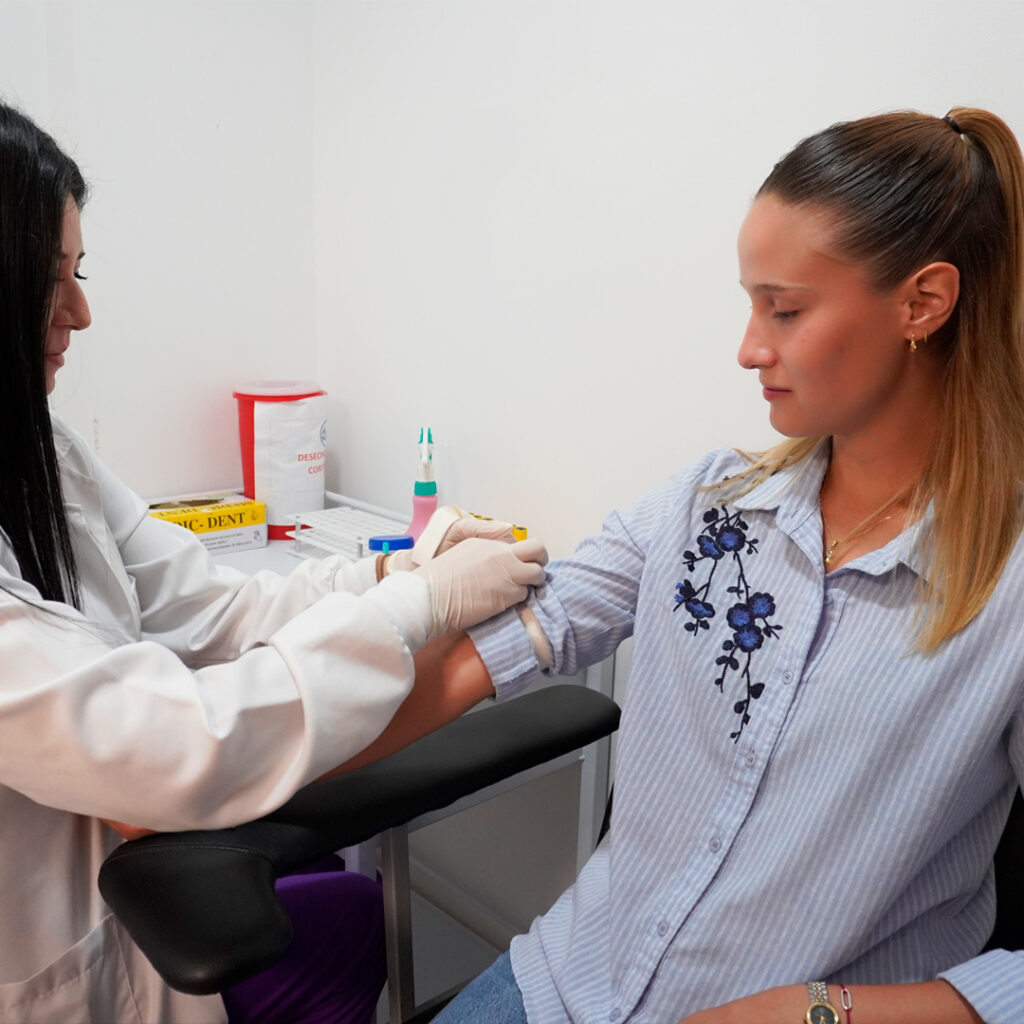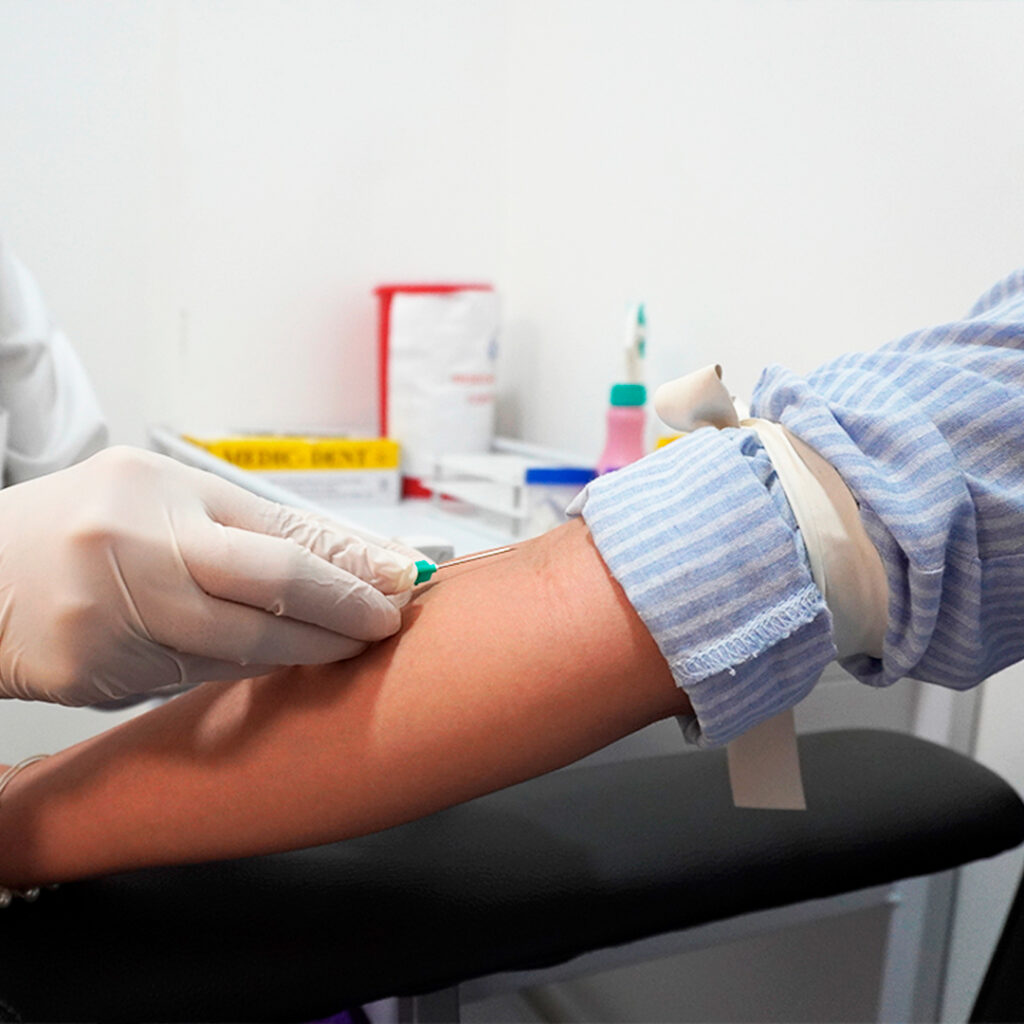Calle 16b y Av. 40, Manta, Ecuador

Hematology:
Hematology is a branch of medicine that studies the morphology of blood and the tissues that produce it. It enables diagnosis and treatment of blood disorders and its cellular components. It covers the cellular composition of blood, coagulation processes, blood cell formation, hemoglobin synthesis, and all related disorders.
Clinical Chemistry:
Clinical chemistry deals with the chemical aspects of human life, applying laboratory methods for diagnosis, monitoring, treatment control, prevention, and research of diseases.
Immunology:
The study of immunological diseases is complex and requires specific testing. For practical laboratory diagnostics, these pathologies are generally divided into four main groups: immunodeficiencies, autoimmune diseases, allergic diseases, and oncological diseases.
Coagulation:
Coagulation factors are blood proteins that help control bleeding. There are several coagulation factors in the blood. When a person is cut or injured and begins to bleed, these factors work together to form a blood clot, preventing excessive blood loss. This is known as the coagulation cascade.
Serology:
Serological tests reveal the immune response to an infectious agent. They are used for diagnostic purposes or epidemiological studies. Diagnosis through serological tests is primarily based on detecting antibodies produced by the body in a blood (serum) sample.
Molecular Biology:
A dynamic and constantly evolving field, molecular biology has revolutionized clinical diagnostics. The specific detection and quantification of genetic material in a biological sample has had a major impact across all health areas, especially infectious diseases and cancer. The development of faster and more accurate technologies has transformed molecular diagnostics into a key tool for the clinical team, directly benefiting patients. This field focuses on its diagnostic impact, historical background, main techniques, and future outlook.
Microbiology:
The primary goal of clinical microbiology is to identify the etiologic agent of an infection and determine its susceptibility to specific antimicrobials. For best clinical outcomes, strong collaboration between the treating physician and laboratory specialists is essential, promoting open communication.
Urinalysis:
Urine samples act as liquid biopsies of the urinary tract, collected painlessly and providing quick, cost-effective information.
In humans, normal urine is usually a clear or yellowish liquid. About 1.4 liters are excreted daily, composed of 96% water and 4% dissolved solids. Approximately half of these solids are urea, the main byproduct of protein metabolism. The remainder includes nitrogen, chlorides, ketosteroids, phosphorus, ammonium, creatinine, and uric acid.
Stool Analysis (Coproanalysis):
A non-invasive diagnostic method using naturally excreted fecal samples. It is used to detect parasitic forms. The test is effective for identifying cysts, trophozoites, larvae, and eggs. Accurate parasite identification depends on proper sample preparation. Immediate analysis is essential.
Autoimmunity:
Recent technological advancements have enabled the development of techniques that assist in diagnosing multiple diseases. In autoimmune disorders, immunological techniques are particularly helpful, allowing simultaneous detection of various autoantibodies from small sample volumes. These innovations have increased the sensitivity and specificity of antibody detection, providing clinicians with more accurate tools for early diagnosis and ongoing disease monitoring based on antibody variations in patient samples.



At Manta Hospital Center, our commitment is clear: to continue building the future of medicine for Manabí, providing world-class care, and improving the quality of life for our community. Welcome to the medicine of the future!
| Mon - Fri: | Open 24 Hours |
| Saturday: | Open 24 Hours |
| Sunday: | Open 24 Hours |
Copyright 2025 Andrés Guerrero. All Rights Reserved by 90 Cuadros